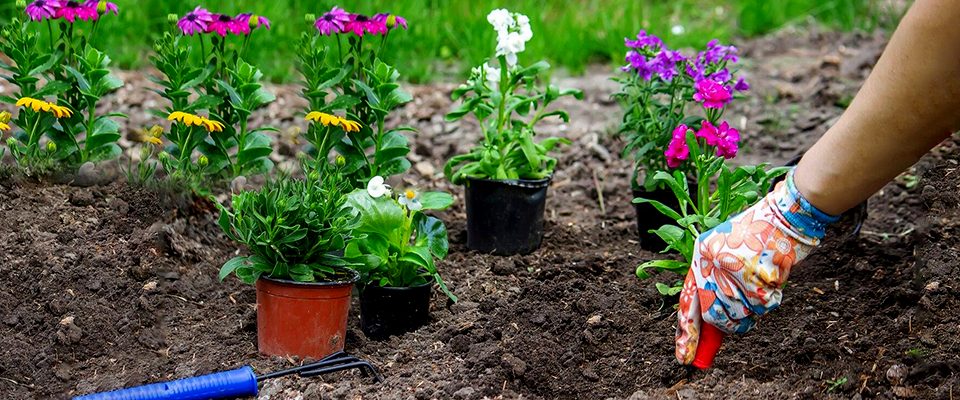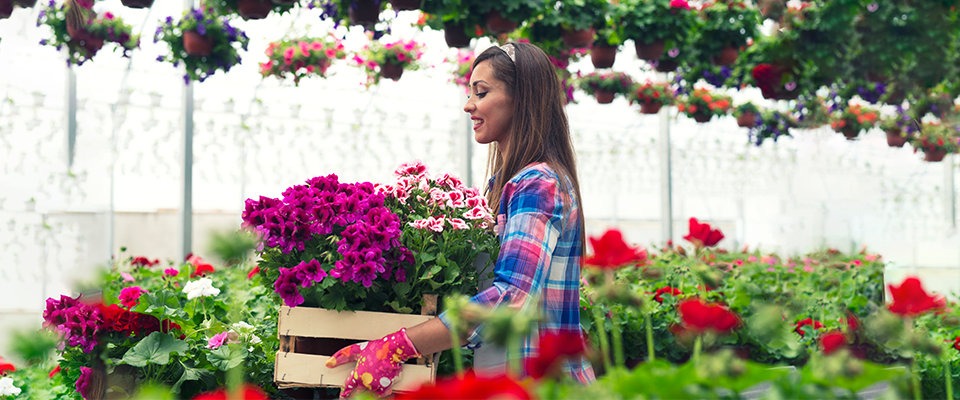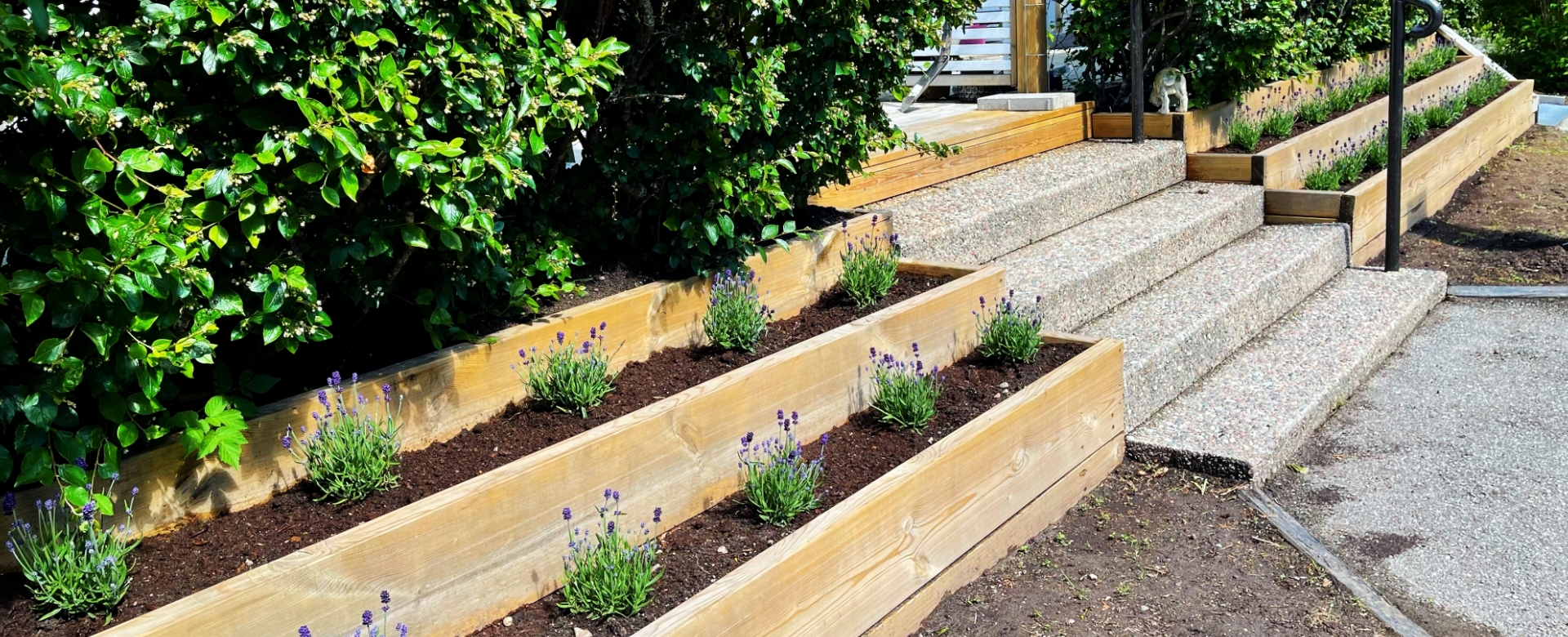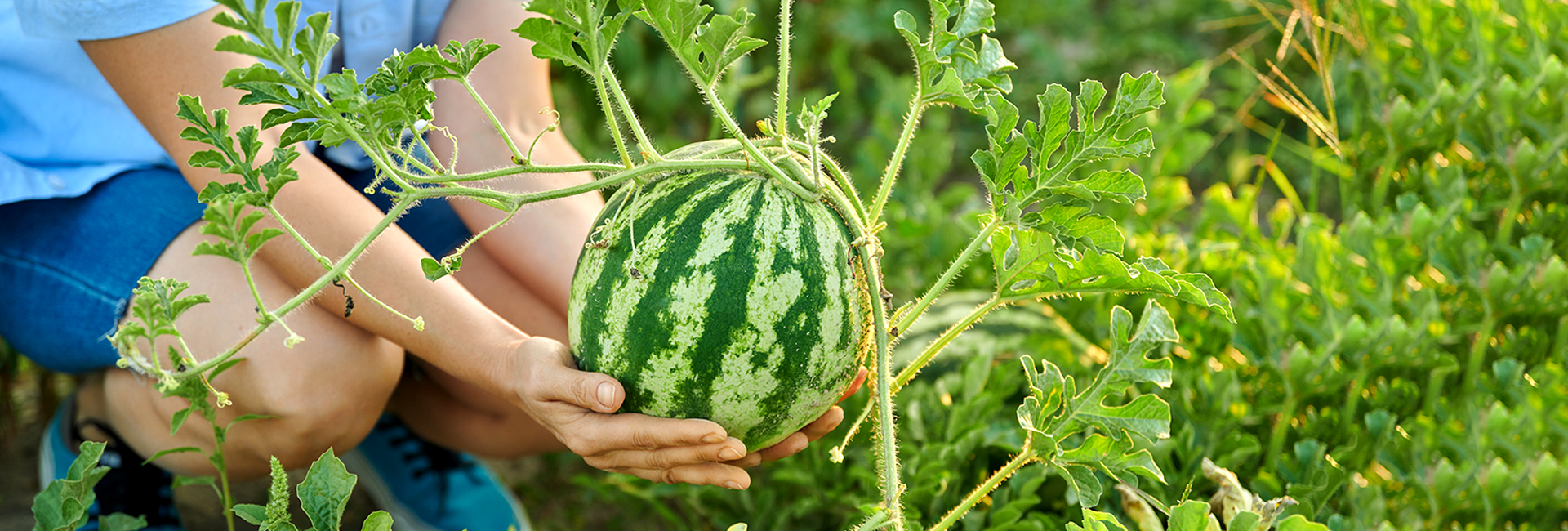If you’ve ever dreamed of creating a flower garden, fear not! Although the task can seem daunting, it’s a straightforward process.
My first starter flower garden… I cheated. I inherited it! I moved into a house, and the previous owner had a green thumb. And although the flower patch had been neglected, I learned a lot about starting (well, really, reviving) a flower garden.
Now, every summer I enjoy my favorite perennials: peonies, pink and white foxglove, orange daylilies, butterfly bush, and lavender to name a few.
The most important lesson I learned: Starting a flower garden is easy if you choose plants well-suited to your location. Sadly, I watched a Valentine bleeding heart wilt away in full sun and learned the hard way what part shade meant.
But alas, hopefully, my flower gardening failures will help you be successful. Keep reading for 8 simple steps for creating a flower garden for beginners.
Quick Overview
Here’s what you’ll learn:
- Location, Location, Location: Sunlight and drainage are key! Choose a spot that receives the right amount of light for your desired flowers and has well-draining soil.
- Know Your Zone: Identify your planting zone to select flowers that thrive in your local climate.
- Mulching Considerations: Learn why and types of mulch work best for flower gardens.
- Maintenance 101: Plenty of water, compost and weeding. Get ideas for maintaining a new flower garden.
How to Start a Flower Garden

Choosing a site is the first step in creating a flower garden. Everything else – from soil amendments, to prep and watering – depends on your location (and the amount of sun it receives).
Follow these steps to create a new flower patch that you can tend for years to come:
Choose the Location
When it comes to location, start with measuring the sun. Does the site receive full sun (6-8 hours per day)? Dappled shade? Full shade?
You can create a garden in any sunlight conditions. But the type of garden depends on the sun. Here’s an overview:
Full Sun
If you’re after a vibrant, colorful summer garden, full sun (6-8 hours per day) is typically required. In full sun, you can start a variety of flower gardens. Here are some ideas:
- Butterfly garden: Attract beautiful, winged guests with nectar-rich plants like butterfly bush, milkweed, zinnias, and marigolds.
- Cottage garden: A classic and vibrant garden overflowing with colorful blooms, often featuring roses, lavender, poppies, and sunflowers.
- Mediterranean garden: Create a warm and inviting atmosphere with heat-tolerant plants like rosemary, lavender, thyme, and geraniums.
Partial Shade
Partial shade works too. Choose a location near a shade tree or near your home, where you get afternoon shade. Part-shade gardens require 3-6 hours of sun per day. Here are some ideas:
- Woodland garden: Capture the essence of a shady forest with ferns, hostas, hellebores, and impatiens. Lush greenery with pops of color.
- Japanese garden: Cultivate serenity and peace with carefully placed rocks, water features, and shade-loving plants like azaleas, camellias, and peonies.
- Hummingbird garden: Entice these tiny jewels with tubular flowers like bee balm, columbine, and clematis.
Full Shade
You can start a garden under an oak tree or in an area that receives very little light. Just make sure to choose plants suited to full shade. Here are some ideas:
- Hosta Garden: Showcase the diverse foliage and textures of hostas, creating a calming and elegant space.
- Fernery: Create a cool and refreshing oasis with different types of ferns, offering various shapes, sizes, and textures.
- Begonia Garden: Enjoy continuous blooms with shade-loving begonias, available in a wide range of colors and sizes.
Prep the Plot
You’ve selected a location. Now, the most laborious part… preparing your garden bed. If you do this right, however, you won’t have to do it again.
- First, remove any debris. If you’ll be replacing a section of the lawn, remove the sod. (You can do this with solarization, smothering it with cardboard, or removing it with a hoe.)
- Next, dig and turn the soil. You’ll want to loosen the top 12 inches and incorporate organic matter like compost or aged manure. A mechanical till makes fast work of this.
- Finally, create a boundary. You can outline the bed with stone, bricks or wood. This will help keep out weeds and create a distinctive shape for your garden.
For a non-labor-intensive approach, consider a no dig flower bed. This style of garden doesn’t require tilling and will help to protect soil structure.
Amend the Soil
After you’ve prepped the bed, make sure it’s ready for planting. There are really two tests you should do: A pH test and a drainage test.
Drainage
To test soil drainage, dig a hole 12 inches deep by 12 inches wide. Fill the hole with water. Ideally, the hole should drain within 10 to 30 minutes. If it takes longer than 30 minutes, you may experience drainage issues.
Focus on amending the soil. You might create drainage channels or amend the soil with perlite. If it drains in less than 10 minutes, amend the soil with compost, moss and other water-retaining amendments.
Alkalinity
A pH test will tell you how acidic the soil is. Some flowers love a more acidic soil like azalea and bleeding heart, while others like Shasta daisy don’t. As you amend the soil, also incorporate compost and rich organic matter to feed your plants.
Select Your Flowers
When it comes to choosing flowers for a new flower garden, you should think about two things:
- Hardiness: Plant flowers that are adapted to your climate. I’ve lost beautiful lavender after a harsh winter, because I didn’t choose a cold-tolerant variety (avoid Spanish lavender if you have cold winters!).
- Perennial vs annuals – Perennials come back year after year, while annuals die off in the fall. Annuals allow you to add pops of color and may be cheaper, while perennials return but do take time to establish themselves. Generally, I prefer a mix, until my perennials reach full maturity.
- Sunlight requirements: Choose plants that will thrive with the amount of sunlight the plot receives. As noted, a full-shade flower (like bleeding heart) will wither in full sun.
Design Your Flower Garden
Creating a design for your flower garden is one of the best parts. Take inspiration from gardening books and blogs but make it your own. One rule: Choose flowers that you love!
Here are some ideas for creating visual interest in a flower bed:
- Create focal points: Use taller plants, water features (like a bird bath), or structures to create visual interest. A mini pergola covered in colorful Clematis is a showstopper.
- Layer your flowers: Generally, you’ll put your taller flowers (like butterfly bush) in the back, and the ground covers as a border. I like marigolds, an annual, or lavender (perfect for borders in a Mediterranean garden).
- Plan for color harmony: What’s your color story? Mixing complementary or contrasting colors helps create a vibrant display. You might also plan your colors by season and choose flowers that are in bloom at the same time.
Finally, don’t forget foliage. Bushes (like boxwood) and grasses can add textures and create lush year-round appeal.
Mulching Options
Mulching is important. It helps your flowers retain moisture, protects soil structures, and it will greatly reduce weed pressure. You can even use it to create visual interest like dry pine needles for an acid-loving azalea.
Really, there are two main options: Organic mulch and inorganic mulch.
Organic Mulches
Compost is one of the best organic mulches. It’s rich in nutrients and suppresses weeds; however, you’ll have to replace it frequently, because it breaks down quickly. Other options include:
- Straw
- Pine needles / pine mulch
- Shredded leaves
- Wood chips (properly aged)
You may also want to consider a mulch that’s suited for your climate. For example, wood chips retain a lot of moisture, but may get too hot in full sun gardens in warm summer climates.
Inorganic Mulches
You can also look at options like gravel, rubber mulch or fabric weed barriers. A weed barrier covered with organic mulch is probably the best option for weed suppression.
With inorganic mulches, think about heat retention (gravel and black rubber can heat up quickly) and may increase water requirements, as well as nutrient requirements.
Plan Your Watering Schedule
Watering your new flower garden is the No. 1 maintenance task. Here’s some quick tips for getting it right:
- Know your plants: Different flower types have varying water needs. Research the specific requirements of your plants to avoid over- or under-watering.
- Deep soak, less often: Water thoroughly and infrequently, aiming to soak the root zone rather than just the surface. This encourages deeper root growth and reduces water waste.
- Time it right: Water early in the morning or late afternoon to minimize evaporation and avoid scorching leaves in midday sun.
- Target the roots: Direct water towards the base of the plant, avoiding leaves and flowers to minimize disease risk. Consider using drip irrigation for efficient watering.
Maintain Your Flower Bed
After you’ve built a flower garden, then the real work begins. In addition to water, you’ll also want to keep up with garden maintenenace tasks like:
- Deadheading spent blooms
- Regular weeding
- Replenishing mulch
- Pruning back bushy growth
- Cutting back perennials in the fall
If you’ve planted perennials, they will eventually need to divide these plants to avoid overcrowding. This means you would dig up the root ball, break it up, and then replant with additional spacing. This is typically done in the spring.
Bonus Tip: Starting a Cut Flower Garden

Imagine your home filled with fresh-cut blooms every season. If you want to build a flower garden for cuttings, this will be your reality!
A cut flower garden offers the joy of homegrown beauty and endless possibilities for creative arrangements. But where do you begin? Here are some tips to help you cultivate a cutting garden:
-
Choose the Right Flowers
Select flowers with long, sturdy stems and multiple blooms per plant. Popular choices include dahlias, zinnias, roses, cosmos and lilies. You might want to focus on flowers that were bred for cuttings.
-
Plant in Succession
If you grow annuals, choose varieties with different bloom times. This will ensure a continuous harvest of blooms. For perennial flower gardens, choose a diverse range of plants with differing bloom times.
-
Harvesting Tips
Get the timing right for harvests. Generally, cutting flowers early in the morning leads to longer vase life. This is because they won’t reach full bloom in the height of sun during the day.
For cutting gardens, you can also extend your harvest window by drying flowers for arrangements and potpourri.
Wrapping Up: Create Your Dream Flower Garden
Ultimately, a flower garden is a work in progress. You might start with some immature flowers, but within a few seasons, your garden will be fully mature with packed-to-the-gills color.
So, if there was a key takeaway, I would say: Enjoy it. You’ll make mistakes, it might not look perfect, but if you keep after it, you’ll have a flower garden you and your family can enjoy for generations.
Hopefully these tips help! And if you need gardening supplies, head over to your local Homegrown Outlet location. If you’re in Upstate New York, we are your source for organic gardening supplies, soil, nutrients and everything you need.
FAQs
The best month to start a flower garden depends on your climate and the types of flowers you want to plant.
- In cold climates: Wait until the danger of frost has passed, typically late spring or early summer.
- In warm climates: You can start planting earlier, sometimes even in fall or winter. Some flowers do well in cooler temperatures.
- Annuals: You can often plant these throughout the growing season, even starting indoors to transplant later.
- Perennials: Plant them during their dormant season, often in fall or early spring.
There are several principles to consider when arranging plants:
- Height: Place taller plants in the back, medium height in the middle, and shorter ones in the front for a layered effect.
- Bloom time: Combine plants with different bloom times to ensure continuous color throughout the season.
- Color: Use complementary or contrasting colors to create a cohesive or vibrant look.
- Foliage: Consider the texture and color of leaves for added interest, even when plants aren't blooming.
Start by sketching your plan on paper. Consider:
- Shape and size of your plot: Use curves, borders, or raised beds for aesthetic appeal.
- Paths and seating areas: Designate spaces for easy access and enjoyment of your garden.
- Focal points: Use taller plants or bold colors to create eye-catching centers of attention.
- Traffic flow: Ensure paths are wide enough for comfortable movement.
- Utilities: Locate and avoid underground pipes or cables.
Flower gardens offer numerous benefits. They provide visual interest and a place to relax. But they also play an important role in ecosystems.
They attract butterflies and bees and create habitat for pollinators. They reduce erosion, clean the air, and there are many mental health and physical benefits to gardening.
The "rule of three" refers to planting groups of three plants of the same variety to create visual impact and balance. This prevents a cluttered look and adds unity to your design. You can use this rule for different plant heights and colors throughout your garden.




